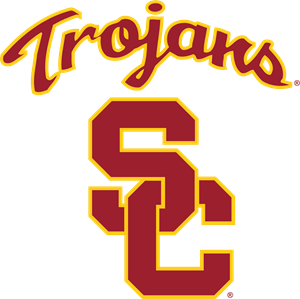Los Angeles was a rough-and-tumble frontier town in the early 1870s, when a group of public-spirited citizens led by Judge Robert Maclay Widney first dreamed of establishing a university in the region. It took nearly a decade for this vision to become a reality, but in 1879 Widney formed a board of trustees and secured a donation of 308 lots of land from three prominent members of the community – Ozro W. Childs, a Protestant horticulturist; former California governor John G. Downey, an Irish-Catholic pharmacist and businessman; and Isaias W. Hellman, a German-Jewish banker and philanthropist. The gift provided land for a campus as well as a source of endowment, the seeds of financial support for the nascent institution.
When USC first opened its doors to 53 students and 10 teachers in 1880, the "city" still lacked paved streets, electric lights, telephones and a reliable fire alarm system. Today, USC is home to more than 33,000 students and nearly 3,200 full-time faculty, and is located in the heart of one of the biggest metropolises in the world.
Los Angeles was a rough-and-tumble frontier town in the early 1870s, when a group of public-spirited citizens led by Judge Robert Maclay Widney first dreamed of establishing a university in the region. It took nearly a decade for this vision to become a reality, but in 1879 Widney formed a board of trustees and secured a donation of 308 lots of land from three prominent members of the community: Ozro W. Childs, a Protestant horticulturist; former California governor John G. Downey, an Irish-Catholic pharmacist and businessman; and Isaias W. Hellman, a German-Jewish banker and philanthropist. The gift provided land for a campus as well as a source of endowment — the seeds of financial support for the nascent institution.
USC’s participation in the Olympics dates back to 1904, when Emil Breitkreutz’06 traveled to St. Louis, becoming the first USC student to compete in the Olympic Games. Breitkreutz took home a bronze medal in the 800-meter run — marking the beginning of a Trojan Olympic legacy that today is unrivaled.
Since then, USC has produced more Olympians, overall medalists and gold medalists than any other university in the United States.
USC’s star-studded Olympic roster includes 418 Trojans who attended the university before, during or after their Olympic appearances. These athletes have represented 60 countries and participated in 28 different sports, ranging from those generally associated with USC, such as track and swimming, to more unusual sports, such as team handball, canoeing and bobsled.
USC has a long history of support for veterans and the military. The university became a training school for Army officers during World War I and expanded its role during World War II, serving as a naval preparatory flight cadet school and hosting Army, Marine Corps and Navy training programs.
In addition, USC is one of only two universities, along with Notre Dame, to have maintained an unbroken, decades-long relationship with the ROTC.
The ROTC program at USC was founded in 1943 and currently numbers 120 future officers in four branches of the military — the Air Force, Army, Marine Corps and Navy.
